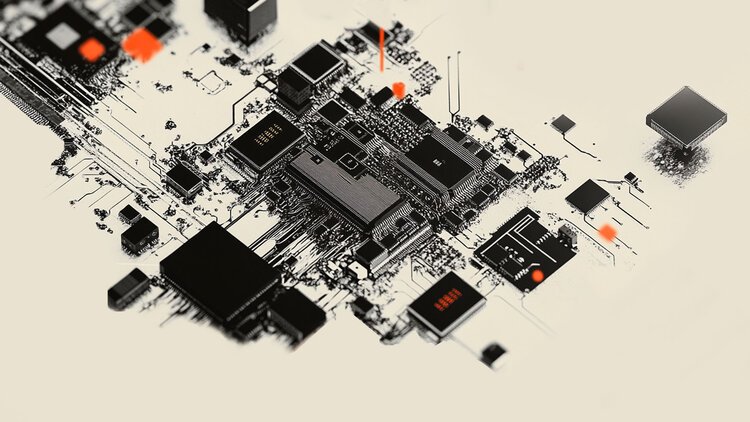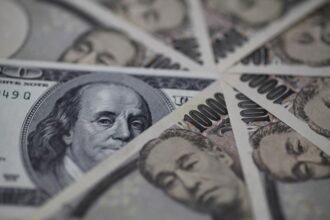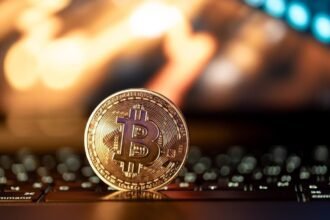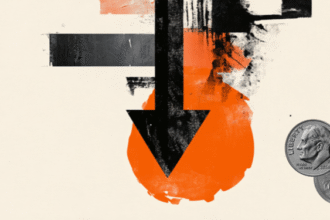There’s a certain irony in hearing Jeff Bezos call AI a “good bubble.” Usually, when a billionaire investor in the space drops the b-word, markets flinch, screens flicker, and traders instinctively glance at their hedges. But this isn’t your dot-com redux or your subprime déjà vu. Bezos is talking about the industrial kind — the rarest species of bubble — one that doesn’t destroy capital so much as it rearranges it into permanent infrastructure. The idea is simple: overinvestment today lays the tracks for tomorrow’s efficiency. It’s the railway boom, not the tulip craze — and the steam engine this time around runs on silicon, not coal.
Still, even “good” bubbles sweat. The data now show fissures forming along the edges of this AI-driven expansion — a strain in the credit markets, an eventual deceleration in tech earnings, and an unmistakable fatigue setting in at the data-center level. The tape isn’t flashing red, but the tempo has changed. What started as a euphoric sprint in 2023 has slowed into a long-distance relay, and we’re starting to see who’s still holding the baton.
The first crack in the façade isn’t coming from equity valuations but from the bond market. AI-linked firms have already issued a record $141 billion in debt this year — a level that would make even the old telecom bubble blush. This isn’t desperation; it’s the natural evolution of an era where cash balances at the hyperscalers — Amazon, Meta, Microsoft, Google, and Oracle — have been melting like ice cubes under the intense scrutiny of insatiable GPU demand. Their liquidity ratios are normalizing toward those of ordinary investment-grade corporates. The cash-rich behemoths are quietly becoming borrowers again. When giants start tapping the credit markets to feed the AI beast, it’s no longer a curiosity — it’s a macro story.
Goldman’s traders put it bluntly: it’s not alarming yet, but the funding mix has flipped. For now, it’s leverage with purpose — capex backed by massive cashflow — but the optics matter. A market that has come to treat AI spending as a GDP substitute can’t afford for that spending to slow, and debt is a delicate way to keep the lights on without saying the word “taper.”
The irony is that even as the world obsesses over data-center expansion, the landlords of that revolution — the data-center REITs — are the worst performing real-estate sector this year, down nearly 10%. You could call that poetic justice: the picks-and-shovels trade got trampled by its own gold rush. For every Nvidia breakout, there’s a Digital Realty breakdown. The story isn’t linear; it’s rotational, with capital chasing narrative faster than fundamentals can catch up.
Meanwhile, the Magnificent 7, those perennial headline makers, are showing their first real deceleration in years. Earnings growth that screamed at 28% is now expected to glide at 14%. When your GDP is running on the fumes of tech profits, that slowdown matters. Nearly 90% of aggregate earnings growth has come from tech and communications alone — meaning the other 493 stocks in the S&P are passengers, not drivers.
Bridgewater’s math is stunning: nearly 40% of U.S. real GDP growth last quarter came from tech capex.
That’s not diversification; that’s dependence. The bulk of that outlay was AI infrastructure — servers, networks, GPUs, power redundancy — the invisible scaffolding of the new economy. The problem isn’t that it’s unsustainable; it’s that it’s unsustainably fast. Capex-to-GDP ratios for AI are already outpacing every previous boom — railroads, electrification, the internet. But GPUs are like milk, not machinery — they spoil fast. Each new generation outdates the last within five years. For the math to work, those GPUs need to earn back their cost of capital in half that time. Most aren’t. Every dollar earned by model providers is being shoveled straight back into the furnace of reinvestment.
This is where “good bubble” logic collides with cash-flow reality. Yes, overinvestment creates infrastructure — but someone still has to service the debt in the meantime.
We’re now watching the market’s psychological turn — from exuberance to vigilance. Analysts expect hyperscaler capex growth to slow later this year. Not reverse, just slow. Yet even that word carries weight in a narrative that’s been powered by limitless momentum. The AI industrial cycle is shifting gears, and traders can sense the friction. The baton has been passed from the dreamers to the accountants.
And maybe that’s the real definition of a “good” bubble — one where, when it bursts, the debris forms a foundation. The dot-com crash gave us fiber optics. The housing bust re-engineered the credit system. If this one pops, it’ll leave behind railways of data, towers of GPUs, and trillion-dollar utilities that used to call themselves tech firms.
In other words, this isn’t a collapse waiting to happen — it’s a reshuffling of the economic deck. The winners may change, the multiples may compress, but the infrastructure remains. Bezos is right in that sense: this bubble is building something. But make no mistake — it’s still a bubble. And like all good ones, it ends not with panic, but with exhaustion — when the market finally stops mistaking capex for growth, and starts asking who’s left to pay the power bill.
Disclaimer:
I’m trying to put out at least one piece on AI each day this week — not because I’m heavily invested in the sector in either China or the U.S., but because there’s so much misinformation swirling around that it’s starting to muddy the water. I want to take a step back from the noise and look at this market objectively, through my trader’s lens, and point out where I think the real tail risks actually sit. It’s not about taking sides or hyping the story — it’s about separating structural truth from speculative myth and showing where I see cracks could quietly start to form beneath all the optimism. Of course, when those cracks become more visible, I’m not going to sit there and watch them widen.
The AI market right now is full of hot takes, polarized opinions, and too many narratives written for clicks rather than clarity. I’m not here to play either the cheerleader or the skeptic. I’m here to dissect — to read the tape through volatility, not the headlines.
I tried to peel back each layer of the AI story: the balance sheet mirage where capex is increasingly debt-financed; the productivity mirage, where the short-term GDP pop may prove front-loaded; the infrastructure bottleneck around power, cooling, and chips; the geopolitical loop connecting AI, export controls, and great-power rivalry; and the monetary feedback loop, where AI-driven optimism might actually complicate the Fed’s path instead of simplifying it.




















